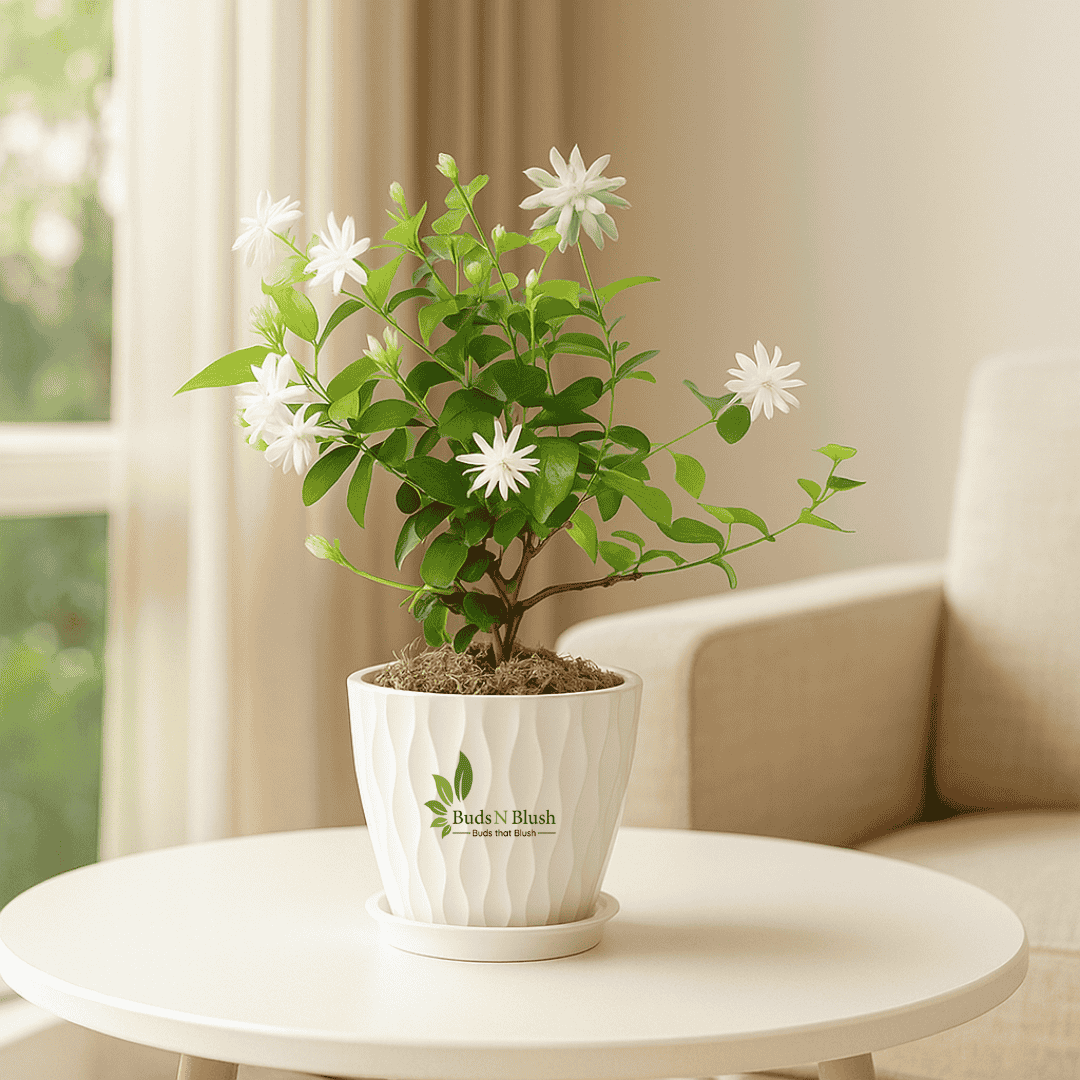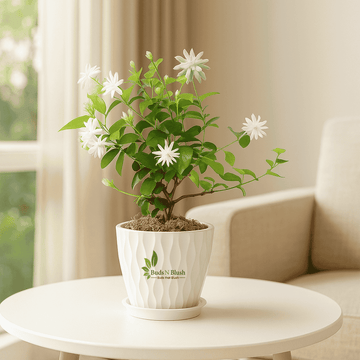Jasmine Chameli


What's in the box?
✅ Jasmine (Chameli) – The Timeless Fragrance of Purity and Elegance
The Jasmine, lovingly called Chameli in India, is an evergreen climber and one of the most cherished flowering plants in the world. Known for its intoxicating fragrance and delicate white blooms, it has graced gardens, courtyards, and temple grounds for centuries. Symbolizing purity, love, and devotion, Jasmine holds a special place in Indian culture, used in garlands, perfumes, and rituals. Native to tropical and subtropical regions of Asia, Africa, and the Mediterranean, it thrives in warm climates with abundant sunlight, spreading its beauty and aroma effortlessly.
✅ Origin and Natural Habitat
-
Native to tropical and subtropical regions of Asia, Africa, and the Mediterranean.
-
Naturally thrives in warm, humid environments with full sunlight.
-
Grown extensively across India for ornamental and cultural purposes.
-
Commonly found adorning fences, verandas, and garden arches.
✅ Perfect Placement for a Stunning Home Aesthetic
-
Train along garden trellises, pergolas, or balcony railings for a romantic floral canopy.
-
Perfect for temple gardens or meditation areas for its spiritual fragrance.
-
Place in large decorative pots near entrances for a welcoming scent.
-
Can be grown in hanging baskets where vines can gracefully cascade.
-
Ideal for verandas or sunny patios to fill the evening air with fragrance.
✅ Care Guide – From Nurturing to Blooming
-
Requires 5–6 hours of direct sunlight daily for prolific blooming.
-
Plant in well-draining, fertile soil enriched with organic compost or manure.
-
Water regularly, keeping soil moist but not waterlogged.
-
Fertilize every 3–4 weeks in the growing season with a phosphorus-rich fertilizer (NPK 10-20-10) or organic bone meal to enhance flowering.
-
Light pruning after each bloom cycle keeps the plant compact and encourages new growth.
-
Support vines with sturdy trellises or strings for upward growth.
-
Remove spent blooms to prolong flowering periods.
✅ Benefits of Growing Jasmine (Chameli)
-
Renowned for its enchanting fragrance, especially during evening hours.
-
Symbol of purity, love, and spirituality.
-
Flowers used in garlands, perfumes, teas, and rituals.
-
Attracts pollinators like bees and butterflies.
-
Low-maintenance and adaptable to both gardens and containers.
✅ Common Problems and How to Avoid Them
-
Yellowing leaves from overwatering—ensure proper drainage.
-
Aphids and mealybugs—treat early with neem oil spray.
-
Poor flowering due to low sunlight—ensure sufficient daily exposure.
-
Fungal issues in high humidity—prune for better air circulation.
Enjoy Free Delivery on Orders Over ₹450!
Spend more than ₹450 and get free shipping—it's a great value to buy more and save on delivery fees. Orders below ₹450 will incur a shipping charge, which varies based on your location.
Your Satisfaction Is Our Priority
We want you to be 100% happy with your purchase. If your plant arrives dead, you can return or exchange it within 10 days of delivery. Returns or refunds can also be requested after 10 days, but please provide clear photos or videos showing the condition of the plant.




